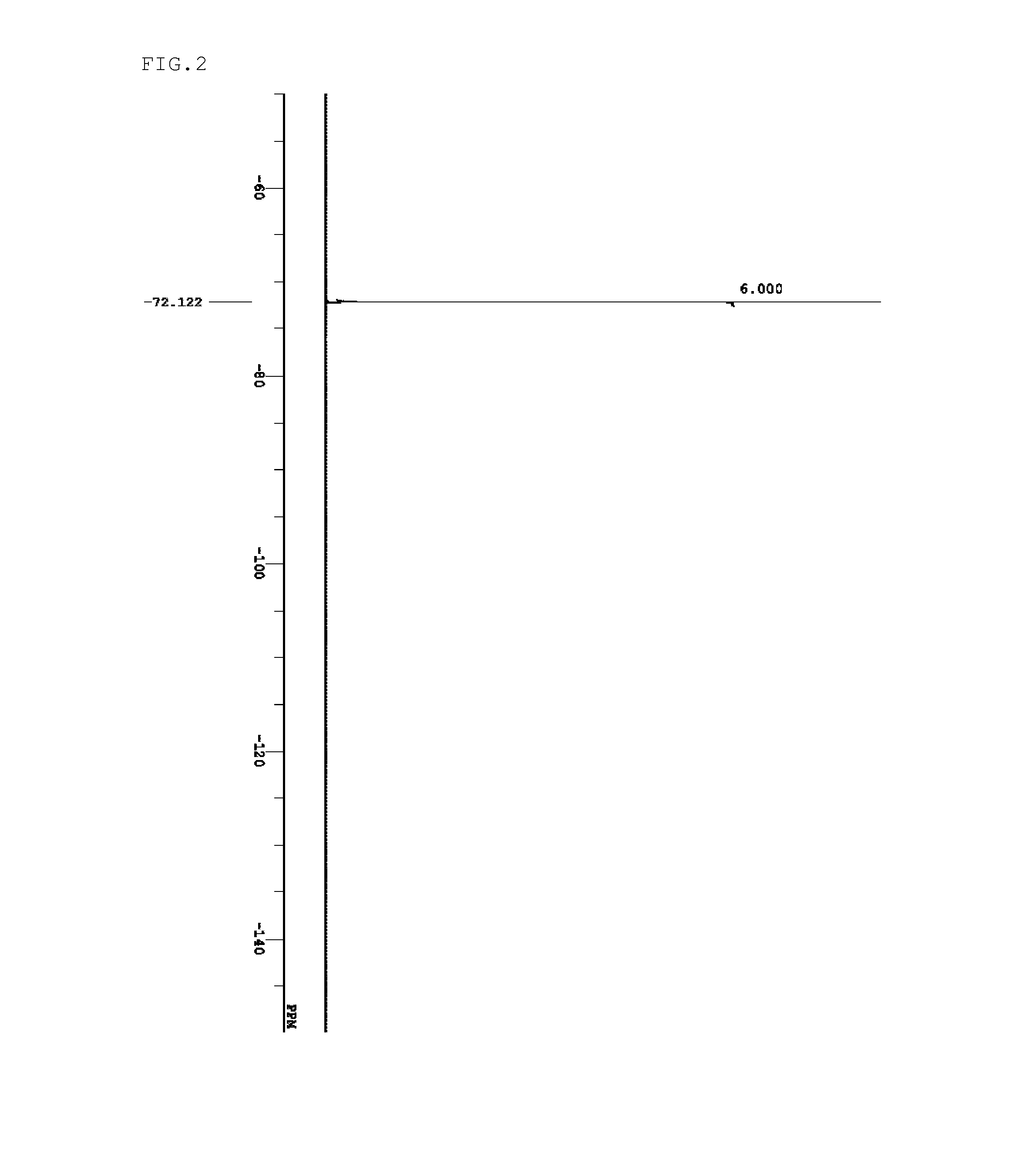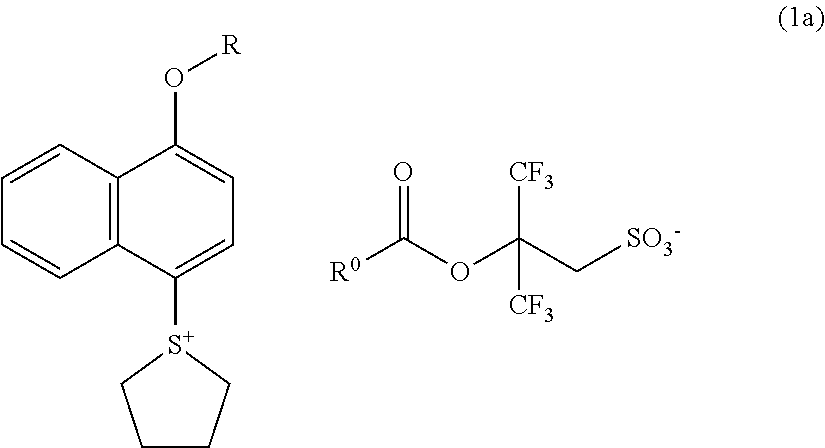Sulfonium salt, resist composition, and patterning process
a technology of resist composition and sulfur salt, which is applied in the direction of photosensitive materials, instruments, photomechanical equipment, etc., can solve the problems of low degradability, low degradability, toxicity, and difficulty in resist composition use, and achieve high diffusibility, high degree of freedom, and controllable diffusibility
- Summary
- Abstract
- Description
- Claims
- Application Information
AI Technical Summary
Benefits of technology
Problems solved by technology
Method used
Image
Examples
synthesis example 1
[0154]Sulfonium salts of the present invention were synthesized by the methods shown below.
synthesis example 1-1
Synthesis of triethylammonium=2-(admantane-1-carbonyloxy)-3,3,3-trifluoro-2-trifluoromethylpropane-1-sulfonate
[0155]In accordance with the method described in Japanese Patent Laid-Open Publication No. 2010-215608, an aqueous solution of sodium 3,3,3-trifluoro-2-hydroxy-2-trifluoromethylpropane-1-sulfonate was synthesized. Then, 152 g of triethylamine, and 104 g of 35% hydrochloric acid were added into 1320 g of this aqueous solution (corresponding to 1 mol of sodium 3,3,3-trifluoro-2-hydroxy-2-trifluoromethylpropane-1-sulfonate); and after the resulting mixture was stirred for 10 minutes, the reaction solution was concentrated. To this were added 111 g of triethylamine, 12 g of N,N-dimethyl-4-aminopyridine, and 2000 g of methylene chloride. To this mixed solution was added a mixed solution of 250 g of 1-adamantanecarbonyl chloride and 250 g of methylene chloride under ice-cooling; and then, after the resulting mixture was stirred for one overnight at room temperature, 1000 g of wate...
synthesis example 1-2
Synthesis of 1-(2-methoxyethoxy)-naphthalene
[0156]
[0157]Under a nitrogen atmosphere, a mixed solution of 1500 g of 1-naphthol, 1032 g of 2-methoxyethyl chloride, 460 g of sodium hydroxide, 78 g of sodium iodide, and 3000 g of ethanol was stirred for 37 hours with heating at 80° C. After cooling, 3000 g of water and 5000 g of toluene were added to the mixed solution, and then the organic layer was separated and washed by 1800 g of an aqueous sodium hydroxide (concentration of 5% by mass) for five times. Then, after washed by 1800 g of water for four times, the organic layer was concentrated to obtain 1835 g of an oily substance. This was distilled under reduced pressure (at 110° C. and 13 Pa) to obtain 1637 g of the intended product (Yield 77%).
PUM
| Property | Measurement | Unit |
|---|---|---|
| refractive index | aaaaa | aaaaa |
| wavelength range | aaaaa | aaaaa |
| size | aaaaa | aaaaa |
Abstract
Description
Claims
Application Information
 Login to View More
Login to View More - R&D
- Intellectual Property
- Life Sciences
- Materials
- Tech Scout
- Unparalleled Data Quality
- Higher Quality Content
- 60% Fewer Hallucinations
Browse by: Latest US Patents, China's latest patents, Technical Efficacy Thesaurus, Application Domain, Technology Topic, Popular Technical Reports.
© 2025 PatSnap. All rights reserved.Legal|Privacy policy|Modern Slavery Act Transparency Statement|Sitemap|About US| Contact US: help@patsnap.com



